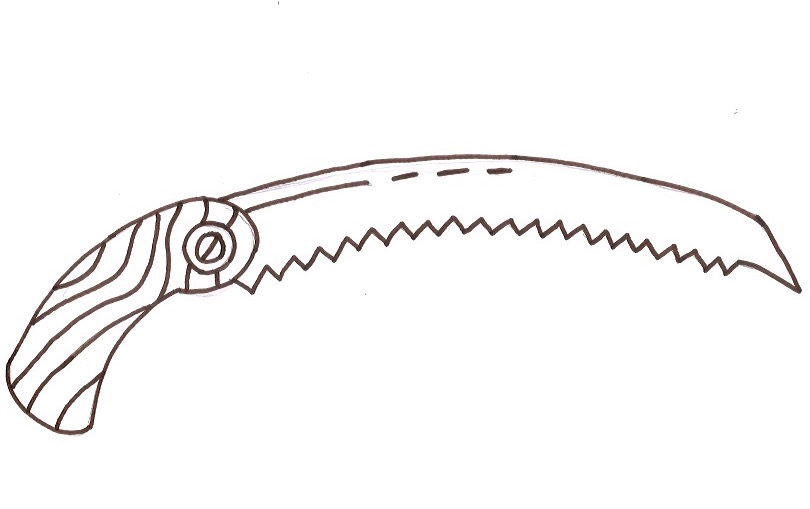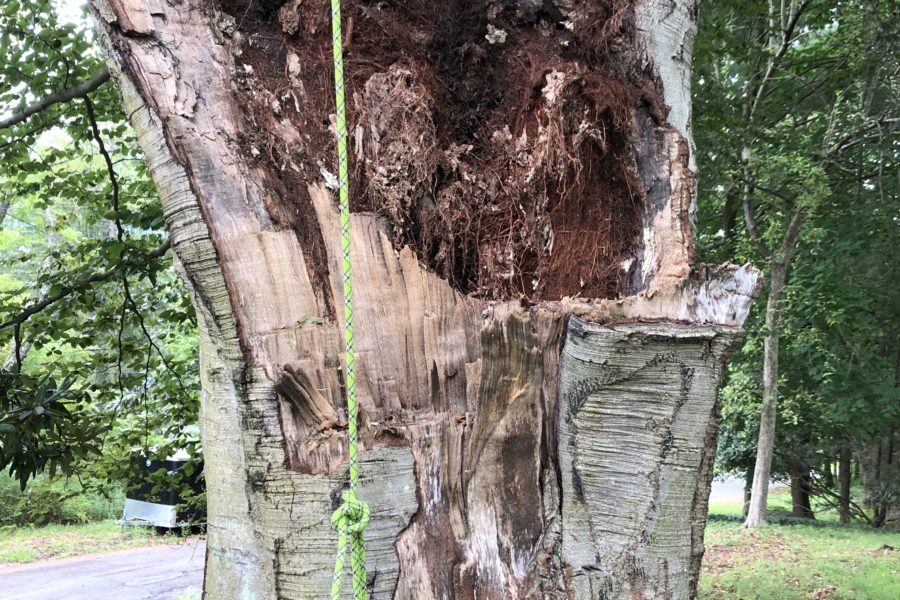I’d like to continue with the theme of the last post in which I wrestle with end-of-chapter Challenge Questions from Ed Gilman’s book An Illustrated Guide to Pruning.
At the end of Chapter 3, we are presented with the question: What are two reasons for preventing branches from growing more than about half the trunk diameter?

Branches approaching a size that is greater than half the diameter of the main trunk or stem can pose problems that are mechanically and anatomically/physiologically based. These large branches, because of how far they extend into the periphery of the crown, are usually subject to great mechanical loading and stress. Depending on how and where they are oriented on the tree, this can potentially mean that those branches are more susceptible to failure, or more susceptible to removal later on as the tree reaches maturity in the urban landscape. Large branches may have a weaker attachment to the stem or trunk than smaller limbs, are more likely to have bark inclusions, and also lack a branch protection zone that in limbs with small aspect ratios would otherwise prevent heart rot agents and decay in the event that the branch is removed or fails.
Gilman writes that “in trees where codominant stems merge or near the union where large branches meet the trunk, mechanical stress in storms is concentrated at those points. Trees fail at points of concentrated stress,” (Gilman, 42). By developing a strong central leader early on in young trees, and eliminating architecture that will develop into codominant stems, we can eliminate these potential areas of concentrated stress and deflect most of the mechanical stress a tree is naturally susceptible to down a sturdy main stem.
According to Gilman, large branches that grow at a similar rate to the trunk also lack branch collar formation, which can in turn make it easier for those branches to split away from the trunk under heavy load. If an inclusion is present between limbs with a large aspect ratio, then continuous wood development from each respective limb will also place added pressure on the branch union as well, increasing the stress.

Large branches (aspect ratio greater than 0.6) also lack many components of a branch protection zone. These components, where present in smaller branches, “resist passage of water, mineral elements (nutrients), fungi and bacteria through the branch union…The lack of a protection zone leads to more decay when large branches are removed,” (48). These physiological components are more abundant in branches with smaller aspect ratios and include the “ability to form pathogen resistant chemicals such as phenols, phytotoxic, or phytostatic compounds,” (Table 3-1, 49). If longevity is a goal in tree management, then managing limbs with large aspect ratios should be an objective.
It should be noted as well that so far this discussion has been a case for not allowing secondary limbs to grow greater than one half the trunk. It is an argument for remediation of that scenario when the tree is young or maturing early on in life. If large limbs or co-dominant stems do exist, then of course there are other options available for mitigating those unions where mechanical and anatomical stress is likely to be concentrated (ie. cabling or reduction pruning in order to keep the branch protection zone intact as well as reducing the mechanical forces on those branch unions). That’s not to say that all large aspect ratio branch unions are weak either. In unions where there is a defined branch-bark ridge and a wide, u-shaped connection point at the branch-bark ridge, then we can observe a stronger attachment than in unions without these characteristics.
Gilman writes that “codominant stem unions can be forced to change by pruning. Recent research has shown that pruning one stem slows the growth rate on that stem while forcing more growth into the nonpruned stem,” (55). This tactic can certainly be used as a pruning prescription for young and mature trees alike. Reduction pruning in this sense can act as a growth regulator in managing the size of branches, or rather the growth rate of those branches, and the forces to which they are exposed.
In codominant stems with large aspect ratios and weak unions, branch wood and trunk wood does not overlap. If large branches are removed or fail in this scenario, it can lead to trunk cracking and large areas of decay localized around the cut or failure. If aggressive enough, that decay can move subsurface into the root system and cause root loss because of the major disruption of trunk flow.
Thinking about large branch development and managing that growth is a big part of young tree development and mature tree preservation. Gilman’s argument for strong central leader development from an early age is a strong case for mimicking the architecture that we would typically find in a forest community. Early on in a trees development, keeping low limbs in the crown suppressed in order to add strong taper and resource allocation to a developing central leader and upper crown makes sense, especially in light of creating a sustainable and safe urban forest requiring less future management. But as arborists we certainly inherit problems from that past, which will always be unavoidable. The more throughly we understand the mechanics of trees, the better we will be able to help them grow and help them thrive in an ever changing world.





Leave a Reply
Your email is safe with us.